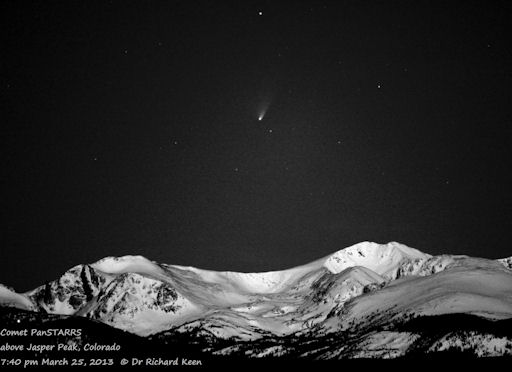GEOMAGNETIC STORM UNDERWAY: A minor (Kp=5) geomagnetic storm is underway around the poles as a medium-speed solar wind stream buffets Earth's magnetic field. High-latitude sky watchers should be alert for auroras. Aurora alerts: text, voice.
FADING COMET PAN-STARRS STILL PHOTOGENIC: "Comet Pan-STARRS continues to fade," reports University of Colorado atmospheric sciences Prof. Richard Keen. "My latest estimate from yesterday puts it at 3rd magnitude." This means the comet is 15 times fainter than it was when it emerged from within the orbit of Mercury on March 11th. Despite the fade, Pan-STARRS remains visible to the naked eye (barely) and very photogenic. Keen took this picture on March 25th:

"This is my favorite of several recent images," says Keen. "It's an Ansel Adams knock-off, using some of the master's techniques to bring the comet out of the moonlight."